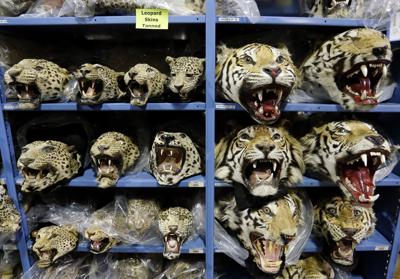
Authorities worldwide have reported an alarming average of nine tigers seized each month over the past five years, a trend signaling a worsening crisis in tiger trafficking. According to a recent report by the wildlife trade monitoring network TRAFFIC, these findings indicate a severe threat to the future of one of Earth’s most iconic species. The global population of wild tigers has dramatically declined from approximately 100,000 a century ago to an estimated 3,700-5,500 today.
Escalating Trafficking and Evolving Criminal Networks
Despite decades of international protection efforts, tiger trafficking is accelerating. The report highlights that criminal networks are evolving at a pace that outstrips conservation initiatives. Over the years 2000 to mid-2025, law enforcement agencies recorded 2,551 seizures involving at least 3,808 tigers. Notably, from 2020 to June 2025, authorities made 765 seizures, confiscating the equivalent of 573 tigers, which amounts to roughly nine tigers per month.
The most significant spike in seizures occurred in 2019, with 141 incidents, followed closely by 139 in 2023. The majority of these seizures took place in the 13 countries that maintain wild tiger populations, with India leading as home to the world’s largest tiger population, followed by China, Indonesia, and Vietnam. Interestingly, a considerable number of incidents were also reported in countries without native tiger populations, including Mexico, the United States, and the United Kingdom.
Shifting Trends in Tiger Trafficking
While enforcement efforts have strengthened, the illegal trade has also expanded. According to Ramacandra Wong, senior wildlife crime analyst and co-author of the report, “This rise reflects improved enforcement efforts but also signals persistent and, in some areas, escalating criminal activity and a widespread demand for tigers and their parts.” The analysis reveals a significant shift: in the 2000s, tiger parts accounted for 90% of seized products, but since 2020, that figure has dropped to 60%. This decline corresponds with a notable surge in the seizure of whole animal carcasses and live tigers.
More than 40% of confiscations in countries such as Vietnam, Thailand, Indonesia, and Russia now involve whole tigers. The report identifies critical hotspots where conservation efforts should be prioritized, including tiger reserves in India and Bangladesh, the Aceh region in Indonesia, along the Vietnam–Laos border, and major consumption hubs in Vietnam, including Hanoi and Ho Chi Minh City.
Another concerning trend is the increasing “species convergence,” with nearly 20% of tiger trafficking incidents involving other threatened wildlife, notably leopards, bears, and pangolins. Demand for tiger products varies significantly by geography. In Mexico and the United States, the trend leans toward live tigers for exotic pet ownership. In Europe, the market is more focused on tiger derivatives used in traditional medicines and taxidermy. Across Asia, demand encompasses skins, bones, claws, and whole dead animals for fashion and traditional medicine.
The report stresses that investigations must continue beyond the point of seizure. Strong international cooperation is essential, alongside the disruption of organized crime networks along the illegal trade chain through intelligence-led, multi-agency enforcement. Leigh Henry, director of wildlife conservation at the environmental charity WWF, emphasized the urgency of addressing this issue. “Illegal trade remains the greatest immediate threat to wild tigers. If we don’t urgently scale up investments to combat tiger trafficking at all points along the trade chain, we absolutely face the possibility of a world without wild tigers,” she stated.







